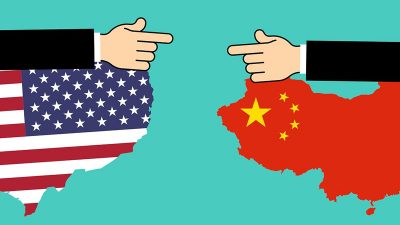
Focus: Consumer Goods Giants - Direct to Consumer Gives Control and Reach
Rensi Widjaja

The introduction of e-commerce as a “must-have” retail sales channel has resulted in consumer goods companies discovering new methods in order to survive and stay relevant in the digital age. We are seeing more and more big names in the industry shifting away from traditional distribution channels, such as department stores and small and medium sized regional chains, towards an uninterrupted route: Direct-to-Consumer (DTC).
The success of DTC brands such as Glossier, Dollar Shave Club, Harry’s, Casper Mattress, Warby Parker, Away, Arlo Skye and Roam has put greater focus on the DTC model which has its own unique set of added benefits for brand manufacturers.
Harry’s, for example, is a predominantly online men’s grooming company based in New York City. It was founded in 2013. It sold its products direct to the consumer thru its own website. Together with Dollar Shave Club, another similar men’s grooming company, both have revolutionized the effectiveness of DTC. Ultimately, these two startups have found themselves competing head-to-head with the biggest razor manufacturer, Gillette. In the last 5 years these two young companies have been successful in growing their market share in men’s grooming segment so much so, that in May 2019, Edgewell Personal Care, the parent company of the second biggest razor maker, Schick, announced it will purchase Harry’s for a reported USD 1.37 billion.
What is a Direct-To-Consumer model?
Direct-To-Consumer (DTC) is a sales model whereby companies deliver their products to consumers through independent and unique channels without liaising with traditional middlemen such as stores, wholesalers, discounters, or using partners, co-marketing arrangements, or other intermediaries.
Control
By adopting a DTC approach, companies are more likely to have total control over their product distribution. They can manage price, discounts, and loyalty as they are able to offer their products at a lower cost than if they had to include intermediaries in their financial estimates.
Furthermore, DTC models enable brands and companies to more readily manage the user experience thru displays, samples or special offers than if there were a department store responsible for selling-on the product. For example, in 2012, to increase sales revenue through the DTC channel, Nike launched NIKEiD, a new shopping experience which allowed customers to design their own Nike products. According to Medium, Nike plans to grow its DTC sales revenue from USD 6.6 billion to 16 billion by 2020.
Reach
DTC models also enable companies to seamlessly expand their market reach and tap a more global pool of customers. One advantage is the trove of consumer data collected. In the past, these data have been exclusively available for retailers, who had cleansed and compressed the point-of-sale details back to the manufacturer. But in a direct model, companies are able to get this invaluable purchasing behavior directly without it being pre-cleansed. This allows them to have a deeper level of understanding of their customers’ buying patterns and in turn it helps consumer goods manufacturers, innovate their products and make more effective and cost efficient decisions.
In summary, we believe companies adopting a DTC method are in the best position to remain competitive in this digitally-oriented online only e-commerce driven retail market. Because consumers are now faced with a plethora of purchasing channels, it is crucial for consumer goods companies to stay ahead of the trend and plan for the future using insights from consumer purchasing behavior. We believe companies that incorporate DTC into their sales channel model indeed have a more unique selling proposition compared to more traditional peers. In particular, we like a Fast Moving Consumer Good (FMCG) company that is leading its peers in this very important market trend.


